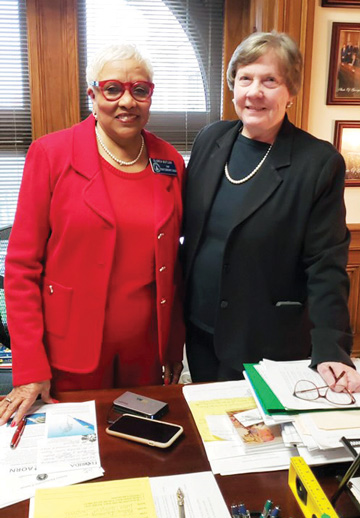Go to the Well for Wellness
One of the primary responsibilities of a leader is to ensure the continued safety and wellbeing of those they lead. Check in regularly with each member of your team to...
This website uses cookies. to enhance your browsing experience, serve personalized ads or content, and analyze our traffic. By clicking “Accept & Close”, you consent to our use of cookies. Read our Privacy Policy to learn more.
By: Beata Mastalerz, DNP, RN, NEA-BC, CNOR
Published: 6/9/2022
The decision to rid our facility of surgical smoke occurred when one of our perioperative nurses became consumed with plumes emitted into the OR air from the use of electrosurgical cautery. The team in the room was in the middle of a breast-reduction surgery, a high smoke-generating procedure. After a few minutes working the case, the nurse began experiencing asthma-like symptoms. Her difficulty in breathing required an immediate intervention and the symptoms subsided only after 30 minutes of treatment in the PACU.
To protect the veteran nurse, who has a history of respiratory challenges triggered by smoke and other noxious fumes, our short-term goal was to assign her to cases that don’t generate a lot of surgical smoke. Of course, as any surgical leader can attest, you can’t always control staff assignments on such a granular level. Still, there was absolutely no doubt she reacted negatively to surgical smoke, and we knew additional actions needed to be taken to protect her from further exposure and harm.
Looking back, having to treat a stricken member of our team in the PACU was the starting point of our journey to smoke-free ORs. An effort championed by the very nurse who suffered the severe asthma attack served as a catalyst and eventually led us to where we are today: Proud recipients of AORN’s Go Clear Award at the gold level, the highest of three designations that recognize standout healthcare facilities that have implemented practices and protocols to eliminate or greatly reduce surgical smoke. The Go Clear program requires facilities to meet 10 components, which include developing an action plan for smoke evacuation and education for staff. When facilities meet the requirements, they’re judged on their education performance, smoke evacuation compliance and having a sufficient number of smoke evacuators available for use.

Having a program champion with such a compelling personal story to teach about the danger posed by smoke in the OR no doubt helped our cause, but you don’t need such a dramatic incident to get your own smoke-free protocol up and running. Here are the key elements of a successful, facility-wide rollout.
• Rely on frontline staff. While many facilities don’t have such a direct and visceral reminder of the dangers of surgical smoke as a frontline nurse who suffered an asthma attack in the middle of surgery, they do have a team of dedicated, passionate perioperative nurses who are in harm’s way every time they step into an OR. These are the individuals you want as stakeholders to lead your efforts to go smoke-free. Our perioperative nurses were the ones who gathered all the research we ultimately used to sell the program to leadership and ensured we met the criteria needed to achieve our gold level Go Clear status.
Obviously, equipment plays a significant role in any smoke-free initiative. This decision will vary greatly from facility to facility. For us, after the literature review, the next most crucial step in our process was reviewing all the equipment we already had. Again, with this being a nurse-driven initiative, our frontline staff assessed our current smoke eliminating equipment and what was required to comply with AORN’s Go Clear criteria.
Before we started our journey to smoke-free ORs, we had six smoke evacuators. Today, for 17 ORs, we have 19 devices. During extensive plastic surgeries, we use two electrosurgery units, so we place two smoke evacuators in the OR. We were also able to add cautery pencils that include integrated evacuators.
When reviewing smoke evacuators on the market, assess the ease of use, noise levels during activation, smoke removal efficiency and the cost of the equipment and the filters. Some companies might offer the evacuators for free if you purchases the disposable filters from them.
• Use a variety of formats. After our nurses dug in and found the most compelling research on the dangers of surgical smoke, they presented the data to staff in a variety of formats to make sure everyone understood the information. Remember, you want to present the data in a way that makes it virtually impossible for leaders and decisionmakers to deny the benefits of a smoke-free OR. Our nurse experts presented examples ranging from serious health issues accelerated by smoke plumes to the potential financial impact due to additional coverage needed for sick days or lost surgical volume due to staff shortages.
The nurses spearheading the smoke-free movement crafted a presentation and shared it during an in-service for the rest of the staff during a weekly departmental meeting. That presentation combined a lot of relevant, educational information and data — perioperative nurses report two times the number of respiratory issues such as chronic asthma, emphysema and bronchitis compared to the general population — with some compelling visual materials. For instance, during the literature search, our smoke-free team discovered a video of a physician, Anthony Hedley, MD, who issued a statement on how he had contracted a pulmonary disease due to the hazardous effects of surgical smoke.
Information on the dangers of surgical smoke was also presented to our anesthesia team and surgeons during their meetings and disseminated to the various service lines via email. Having the surgeons view the succinct educational information about the dangers of surgical smoke and our plan to eliminate it from the OR helped to get them engaged and committed to the initiative. We were easily able to secure 150-plus surgeon signatures signifying their complete support.
• Overcome resistance. Our facility was extremely fortunate in many ways. We had a persuasive champion with a compelling story to tell; we had a dedicated, passionate and highly organized group of nurses spearheading the initiative;
and we had the complete support of senior leadership. Still, there were plenty of challenges along the way. While most of our surgeons were on board with the initiative after we presented the research on the dangers of surgical smoke, there
was some initial resistance from a select few who refused to use smoke evacuators during their procedures. If this happens, be firm and stand your ground. When I was met with resistance, I respectfully informed the physicians that this
was a nurse-driven initiative that protects everyone in the OR and non-compliance wasn’t an option.
To be fair, most of the staff and surgeons we approached were on board with our efforts once they were presented with the
data. In fact, many were largely unaware of the hazards associated with surgical smoke. Like many of us, they believed the masks they wore provided adequate protection. This misconception was addressed during our in-service, subsequent meetings
and email communications. We listed the numerous toxic chemicals — formaldehyde, hydrogen cyanide, carbon monoxide — that are present in surgical plume and cited research showing that 77% of the particles go through or around the
mask, exposing staff to those toxic and dangerous chemicals. That was a real revelation for most members of the perioperative team.

Surgical professionals in Georgia are breathing a bit easier after Gov. Brian Kemp signed surgical smoke evacuation legislation into law on May 9. Georgia joins seven other states that already mandate smoke-free ORs: Rhode Island, Colorado, Kentucky, Oregon, Illinois, Washington and Arizona.
The collective effort to pass the smoke evacuation bill among perioperative pros and other supporters in the Peach State took place over several years. After failing to pass the bill in Georgia’s 2020 and 2021 legislative sessions, 2022’s effort finally got it over the finish line.
Brenda C. Ulmer, MN, RN, CNOR, FAORN, past president of the Association of periOperative Registered Nurses (AORN), was heavily involved in the legislative push for several years. “My first feeling on learning that our bill had been signed by the governor was one of relief,” she says. “It has been a long and hard-fought battle to get to this point, and I think we are all glad this part of the journey is complete.”
Ms. Ulmer says her legislative team’s next step will be to work toward helping hospitals and ASCs implement the new law. “It is one thing to have a law in place, but practice has to be based on AORN’s surgical smoke safety guidelines, which are underpinned by science and published peer-reviewed evidence,” she adds. “We’ve developed a program that will be presented at the Georgia Council annual conference in October to give operating rooms across our state the tools to successfully implement consistent smoke evacuation and filtration programs. We are committed to help drive permanent change.”
Jennifer Pennock, associate director of government affairs at AORN, says two more states could come online with their own laws soon. “Connecticut has legislation headed to the governor’s desk, and there are bills in New York that have a really good possibility of enactment by June,” she says.
— Joe Paone
One of the primary responsibilities of a leader is to ensure the continued safety and wellbeing of those they lead. Check in regularly with each member of your team to...
The American Association of Nurse Anesthesiology (AANA) has joined the ALL IN: Wellbeing First for Healthcare coalition, saying the group’s initiative to improve the...
Once you understand that being a perfectionist can be harmful to your personal outlook, health and anxiety level, you can unravel what to do about it....